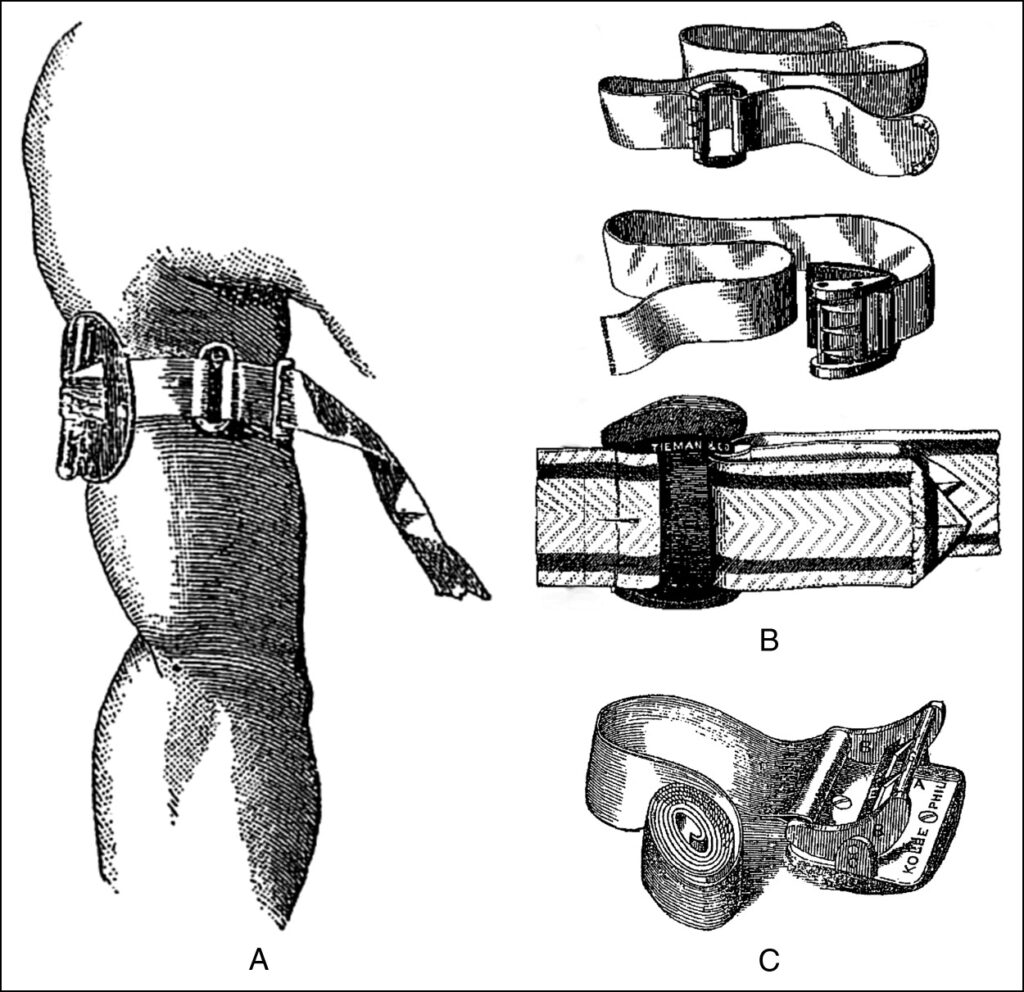The Romans
Still curious about the tourniquet, you decide to learn more about its origin. You find out that tourniquets were in use long before the need to take blood samples for lab study. The first evidence of the tourniquet was found in Roman ruins.
The 1500s
Before combat use, the tourniquet was mostly used for surgeries involving the removal of a limb. This type of surgery is called an amputation. In the early 1500s, a medical book was published that included the first picture of an amputation surgery using a tourniquet. The advancement of the tourniquet during this time involved such notable names as Hans Von Gersdoff, Guy De Chauliac, Ambrose Pare, Leonardo Botallo, and Wilhelm Fabry.
The 1600s
The first military combat use of the tourniquet was documented at the Siege of Besancon during the 1600s. A French surgeon named Etienne Morel created a type of tourniquet by twisting a bandage covering a thigh wound with a stick. He twisted until the bleeding stopped.
The 1700s
The tourniquet didn’t change much until the 1700s when it began to advance in design and efficiency. John Louis Petit, a Paris surgeon, developed a tourniquet that applied pressure to the main artery in 1718. This controlled bleeding in amputations better, which increased patients’ chances of survival. Of all the different forms of tourniquet use, this became the most popular.
The 1800s
The late 1800’s saw the tourniquet used for the first time in an operation that did not involve amputation. This new use of the tourniquet was employed by a British surgeon named Joseph Lister. He developed his own type of tourniquet to compress a large abdominal artery during surgeries.
Current Day
Moving forward in your tourniquet research into the 20th and 21st centuries, you discover that the tourniquet has undergone many small changes in use and design, but not in purpose. It is always used to stop the flow of blood. The primary changes to the tourniquet in the last two centuries have been its acceptance as a lifesaving mechanism in battle.
Battle-Testing the Tourniquet
The tourniquet was used by both the North and South during the Civil War. Troops were trained minimally in its use, often resulting the tourniquet’s misuse. However, it did prevent many men from bleeding to death from their wounds.
Wars of the Early 1900s
As with other wars, World War I brought with it terrible battlefield wounds. Tourniquets were often applied, but left in place much too long. This often caused the loss of the limb on which the tourniquet was applied. Literature from this era includes many negative statements from surgeons about the use of tourniquets. They state that both life and limb are lost unnecessarily due to overuse and unnecessary use of the tourniquet. Both the Spanish Civil War and World War II demonstrated the same negative results associated with inappropriate use of the tourniquet.
Later Wars of the1900s
In the Korean and Vietnam Wars soldiers were given more training on the appropriate and timely application of the tourniquet. Evidence started to point toward more effective use of the tourniquet. Not only were more lives being saved, but more limbs were also saved.





